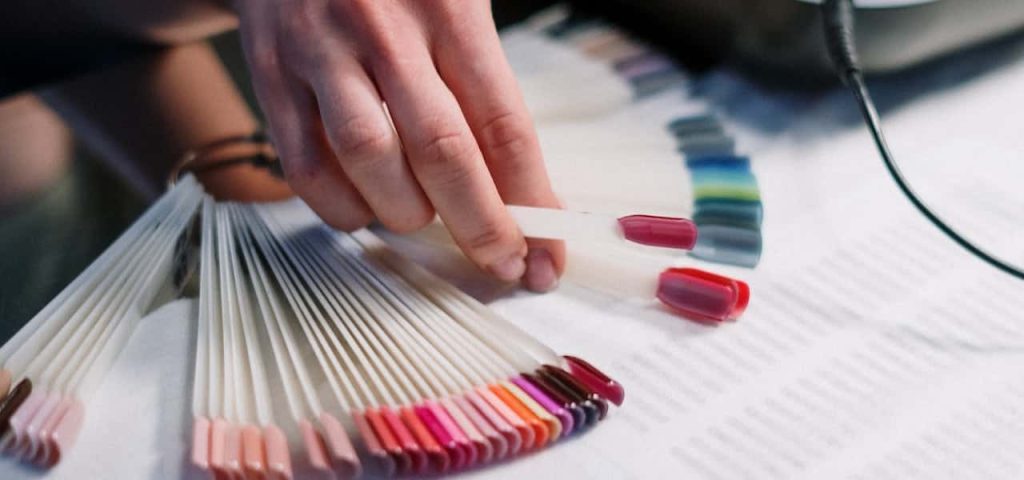Here is your complete guide to how long do acrylic nails last.
Introduction to How Long Do Acrylic Nails Last
Acrylic nails are a popular nail enhancement that is used to add length and strength to natural nails. They are often seen as a way to achieve that perfect manicured look without having to wait for nails to grow out. But how long do acrylic nails last? It’s important to know the lifespan of them and how to properly care for them in order to make them last as long as possible.
How long do acrylic nails last?
They typically last between two and three weeks. However, the lifespan of them can vary based on a few factors, such as maintenance, quality of materials used, and daily activities. Proper maintenance and care of them can help to extend their lifespan.
Factors that affect the longevity of nails:
- Maintenance: They require regular maintenance, including fills and repairs. Neglecting to keep up with regular maintenance can cause them to lift and break, shortening their lifespan.
- Quality of materials used: The quality of materials used in the application of acrylic nails can affect their lifespan. Lower quality materials can lead to lifting and breakage.
- Daily activities: Certain daily activities can cause wear and tear on them. For example, frequent hand washing or exposure to harsh chemicals can cause them to weaken and break.
General lifespan of acrylic nails
As previously mentioned, they typically last between two and three weeks. However, this can vary based on the factors mentioned above. Regular maintenance, such as fills and repairs, can help to extend the lifespan of them.
Tips for extending the life of acrylic nails:
- Proper nail care: Maintaining proper nail care can help to extend the lifespan of acrylic nails. This includes keeping them clean, dry, and free of excess oils.
- Regular maintenance: Regular fills and repairs can help to keep them looking and feeling their best, and can help to extend their lifespan.
- Avoiding harsh chemicals and activities: Certain chemicals and activities can weaken and damage them. Avoiding exposure to these can help to extend their lifespan.
Signs it’s time to remove them: There are a few signs that it’s time to remove them, including obvious signs of wear and tear, physical discomfort, and the risk of leaving them on too long. If you experience any of these signs, it’s important to have your acrylic nails removed as soon as possible.
How often should you get a new set of acrylic?
On average, a new set of acrylic nails can last between 2-3 weeks. However, how often you need a new set of them depends on a few factors. These include the rate at which your nails grow, your lifestyle and how well you take care of your nails. In general, it’s a good idea to get a new set of them every 2-3 weeks to maintain their appearance and ensure the health of your natural nails.

How do I prep my nails for acrylics?
Before getting acrylic nails, it’s important to properly prep your nails to ensure a smooth and long-lasting application. First, remove any old nail polish and gently file your nails into your desired shape. Then, push back your cuticles using a cuticle pusher or orangewood stick. It’s also important to lightly buff the surface of your nails to ensure a strong bond between the acrylic and your natural nail. Finally, cleanse your nails with alcohol to remove any oils or debris that could interfere with the application.
Read More About How Curl Hair Flat Iron?
Are gel extensions or acrylic better?
Both gel extensions and acrylic nails have their advantages and disadvantages. They are generally stronger and more durable than gel extensions, making them a good choice for those with weak or brittle nails. They can also be easier to remove than gel extensions. Gel extensions, on the other hand, tend to look more natural and are often preferred for their flexibility and lightweight feel. Ultimately, the choice between gel extensions and acrylic nails comes down to personal preference and the specific needs of your nails.
| Gel Extensions | Acrylic Nails | |
|---|---|---|
| Pros | More natural look, flexible and lightweight, no strong odor | Strong and durable, easier to remove, can be filled in for a longer wear time |
| Cons | Less durable, can peel or chip more easily, may require more maintenance | Strong odor during application, can be damaging to natural nails if not applied or removed properly |
| Cost | Usually more expensive than acrylic nails | Usually less expensive than gel extensions |
| Removal | Requires soaking in acetone for 10-15 minutes | Can be filed off or soaked in acetone for 10-15 minutes |
| Maintenance | May require more frequent fills or touch-ups | May require less frequent fills or touch-ups, but still need to be maintained properly |
| Best for | Those who want a more natural look or have healthy nails | Those who want a strong and durable nail enhancement or have weak or brittle nails |
Keep in mind that the choice between gel extensions and they ultimately comes down to personal preference and the specific needs of your nails. It’s important to weigh the pros and cons of each option and consult with a professional nail technician before making a decision.
Read More About How To Apply Eye Cream.

Frequently asked questions about How Long Do Acrylic Nails Last
How often should I get my acrylic nails refilled?
It is recommended to get acrylic nails refilled every two to three weeks in order to maintain their appearance and strength.
Read More About What Is Balayage.
Can I remove my acrylic nails at home?
While it is possible to remove them at home, it is recommended to have them professionally removed in order to avoid damaging the natural nails.
Read More About How Much Caffeine is in Green Tea and Why It Matters?
Can I still paint my acrylic nails if they’re starting to chip?
Yes, you can still paint your nails if they’re starting to chip. However, it’s important to have the chips repaired as soon as possible in order to prevent further damage.
Read More About Why do I Look so Bad in Douyin Make Up.
Do acrylic nails damage your nails?
They can potentially damage your natural nails if they are not applied or removed properly. This is because the process of applying and removing them can cause trauma to the nail bed, which can lead to thinning or weakening of the natural nail. To minimize the risk of damage, it is important to have them applied and removed by a trained professional, and to give your nails a break between applications.
Read More About Do you Cleanse After Removing Make Up in the Middle of the Day?
Which is better acrylic or gel nails?
Both acrylic and gel nails have their pros and cons, and which one is better depends on individual preferences and needs. They are generally more durable and can last longer than gel nails. They are also easier to remove and can be more affordable. Gel nails, on the other hand, tend to look more natural and are less likely to lift or chip. They can also be a better option for people with sensitive nails, as they emit less odor during the application process. Ultimately, the choice between acrylic and gel nails comes down to personal preference and lifestyle.
Read More About Diet Coke vs. Coke Zero: Which Zero Soda Diet Tastes Most Normal?
How often should acrylic nails be removed?
They should be removed every two to three months to allow the natural nails to breathe and recover. It is important not to leave them on for too long, as this can lead to damage and infection of the natural nails. If you notice any signs of damage or discomfort, such as pain, redness, or swelling, it is important to have your nails removed immediately.
Read More About Olive Oil is Good for Your Hair: How to Use It and Its Benefits.
Is it OK to wear acrylic nails for years?
It is not recommended to wear them for years on end, as this can cause damage to the natural nails. They can cause the nails to become thin, weak, and brittle over time, which can lead to permanent damage. It is important to give your nails a break between applications and to have them removed every two to three months to allow them to recover. Regular nail care and maintenance can also help to prevent damage and promote healthy nail growth.
Read More About Thinning Hair vs Fine Hair: How to Tell the Difference.
Conclusion
Acrylic nails are a popular nail enhancement that can add length and strength to natural nails. It’s important to know how long they last and how to properly care for them in order to make them last as long as possible. Regular maintenance and proper care can help to extend the lifespan of them, and it’s important to remove them when necessary in order to avoid damage to the natural nails.
| Type of acrylic nails | Lifespan |
|---|---|
| Full set of acrylic nails | 2-3 weeks |
| Acrylic nail fill-in | 2-3 weeks |
| Acrylic overlay | 2-3 weeks |
| Acrylic nail repair | Varies based on the extent of damage |
Please note that the lifespan of them can vary based on individual factors such as nail care, lifestyle, and the skill of the nail technician. It is important to follow proper nail care and maintenance to help extend the lifespan of your acrylic nails.
Read More About Dreaming of Fish Meaning: Understanding the Symbolism Behind Your Dreams.

